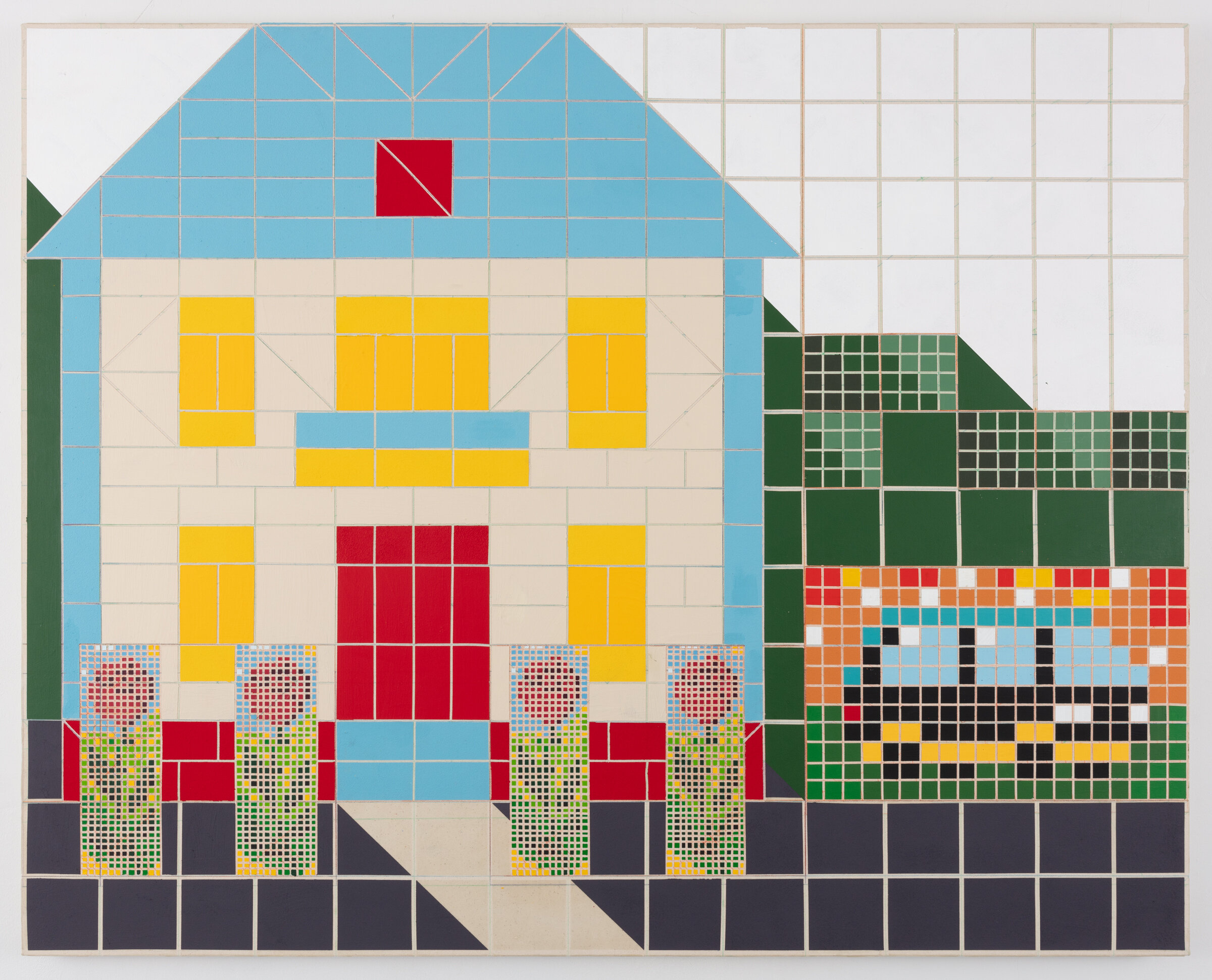What Everything Is Like
Dan Fig and Mike Picos
Sept 2 - 29, 2021
Opening Reception Sept 10, 7-9pm
Open Thurs - Sun, 12-6pm
Exhibition text by Gaby Wolodarski
“Order can serve as a metaphor for order.” -Ernst Gombrich
“The eternal mystery of the world is its comprehensibility.” -Albert Einstein
The look of things, the myriad visual features of everything we encounter with our eyes, comes down to us weighted with histories, both canonical and anonymous. Ordinary seeing saturates us with elements––shapes, colors, arrangements––that are already meaningful, already contentious, already trammeled by use. Institutional Beige. Neon. Grass. Smooth curves. Rectangles. Pantone 292.
Should we wish for freedom in this weird time (chained as we are to looking at thousands of actual images daily, never mind the colors/shapes/arrangements that are given to us in manufactured objects, design, architecture, etc.), Dan Fig and Mike Picos light two distinct and parallel paths for us here.
Mike Picos, the optimist, takes up ordered play as a source of illumination and wonder: the grid’s autonomous self-containment is akin to a child’s intuitive sense that the world has a structure, that the structure is comprehensible, and that the comprehending will happen in due time, naturally. From the grid, pictures emerge.
These pictures are tuned to the wider legacy of abstraction before, after, and around that of 20th Century Modernism. “Primitive” decoration, garment industry patterns, arabesques, tile work, etc.: these anonymous, industrious, global contributions to our inherited visual history offer an alternative epistemology, one of understanding the world by necessity. They evince a human intelligence that is in touch with the cosmos as a matter of course, and does not seek fame or opinion. What is revealed is a measured chaos, a doubling and redoubling of that which is unnameable.
Dan Fig, not so much the pessimist as the anxious doubter, stares the Gorgon in the face: if our consciousness is being molded by GUIs (graphical user interfaces), he proposes, wide-eyed, to let into the same space a whole host of different realities. The result is an orbit without anchor point, a web of relativity, a sui generis game of self-cancelling logic. Play is a method here as well: a way of channeling the energy (terror) of life in times of clip-art overload, but without faith that any revelation will ensue. From a surfeit of pictures, a tight grid emerges.
The paintings endure this tightening stoically. It’s worth noting that for the Stoics, the goal of indifference was freedom.
Here is a cold, computer-generated, flatbed multi-reality. In its toggle between giddy sweetness and paranoid claustrophobia, any logic of correspondences between various modes of transition gets systematically neutralized: is this the structure of our (capitalist) world? Or is it that Fig is positing vision––pure, equanimous vision, vision stripped bare––as a sort of wonderful, calming, freeing darkness?
Out of alienation, form. (Dan Fig)
Out of structure, weirdness. (Mike Picos)
These two paths are parallel, and although they seem to move in opposite directions, the point of comparison is actually an attentiveness to how language shapes us–which is necessarily both a blessing and a curse. The need to think, to “make sense” of the world, produces linguistic transformations, which in turn shape how we think. By way of metaphor, for example, humans can craft a bridge ;) between the world of thought and the world of sense perception.¹ But we will also fall into the trap of thinking that language is powerful enough to encompass all that can be known (and to say it ain’t doesn’t dent its allure).
It is the joyful reticence in the work of these two painters, then, that strikes me as most vital. The paintings effect a series of mundane, grounded transformations; there is a quiet magic at work, which ushers matter and mediated representation towards the possibility of a more lucid sense of context.
- Gaby Wolodarski
Summer 2021
Alabama
1. Hannah Arendt, “Language and Metaphor,” in The Life of the Mind (New York: Harcourt, Inc., 1978), p.110.











